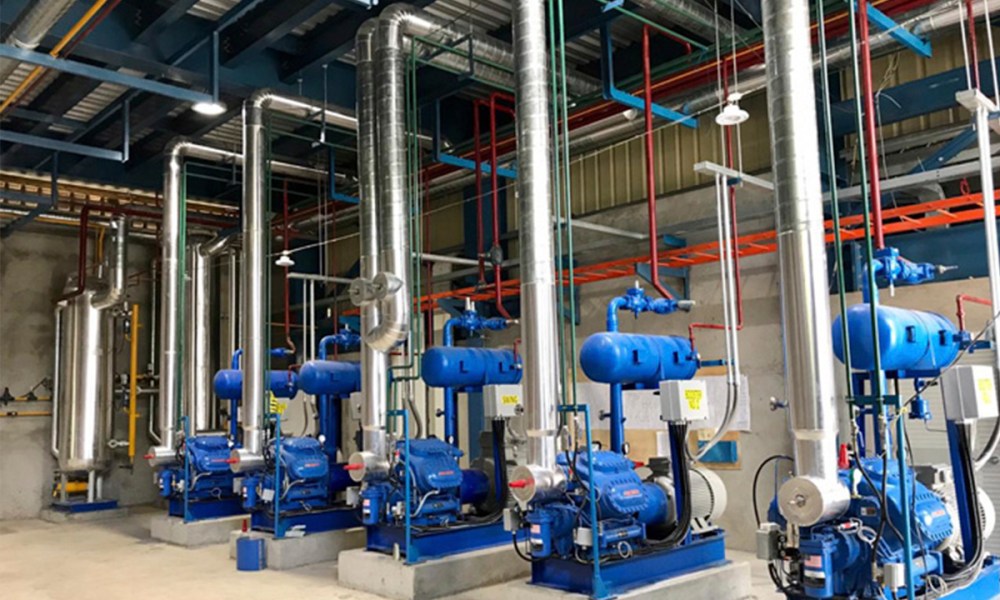
Allied Market Research published a report, titled, “Artificial Intelligence Market by Component (Hardware, Software, and Services), Technology (Machine Learning, Natural Language Processing, Computer Vision, Generative AI, Deep Learning, and Others), Industry Vertical (IT and Telecommunication, Retail and E-Commerce, BFSI, Healthcare, Manufacturing, Automotive, Agriculture, Education, and Media and Entertainment), Deployment (On-Premise and Cloud), Enterprise Size (Large Enterprise and Small and Medium-sized Enterprise), Business Function (Sales and Marketing, Supply Chain Management, Human Resource Management, Finance and Accounting, Cybersecurity, Legal and Compliance, and Operations), and Type (Pretrained Models, Customizable AI, Edge AI, and AI Marketplaces): Global Opportunity Analysis and Industry Forecast, 2024-2033″. According to the report, the global artificial intelligence (AI) industry generated $153.6 billion in 2023, and is anticipated to generate $3,636 billion by 2033, witnessing a CAGR of 37.3% from 2024 to 2033.
Prime determinants of growth
Rise in artificial intelligence maturity in the modern business enterprises and everyday lifestyle of people are signaling significant growth opportunities for the future of global market. In addition, growing digital and internet penetration around the world is positively impacting the growth of the artificial intelligence market.
Download Sample Pages: https://www.alliedmarketresearch.com/request-sample/1773
Report coverage & details:
|
Report Coverage
|
Details
|
|
Forecast Period
|
2024–2033
|
|
Base Year
|
2023
|
|
Market Size in 2023
|
$153.6 Billion
|
|
Market Size in 2033
|
$3,636 Billion
|
|
CAGR
|
37.3 %
|
|
No. of Pages in Report
|
681
|
|
Segments covered
|
Component, Technology, Deployment Mode, Enterprise Size, Business Function, Type, Industry Vertical, and Region.
|
|
Drivers
|
Increase in investments in artificial intelligence systems.
Rise in collaboration between industries and artificial intelligence and machine learning solution companies.
Increase in customer satisfaction and adoption of reliable cloud applications.
|
|
Opportunities
|
Surge in adoption of artificial intelligence in developing economies.
Increase in government initiatives and rise in investments to leverage the artificial intelligence technology.
|
|
Restraints
|
Dearth of skilled workers in the field of artificial intelligence.
Higher deployment cost of artificial intelligence and advanced machine learning.
|
Covid-19 Scenario
- The artificial intelligence market has witnessed significant growth in the past few years and is expected to exhibit further notable growth, due to the outbreak of the COVID-19 pandemic. This is attributed to the surge in need of artificial intelligence among enterprises for improving their customers’ needs and to increase their revenue opportunity. In addition, use of artificial intelligence and machine learning technologies for managing growing volume of data generated from various devices in an organization drives the growth of the market.
- A number of vendors have reported an increase in their industrial profit during the second quarter of 2020. However, major players of the market are introducing new strategies to increase their market value as well as to increase their market share. Furthermore, various banks are using artificial intelligence to help study their customer base by using surveillance software and computer vision to watch people using banking services.
Buy this Complete Report (681 Pages PDF with Insights, Charts, Tables, and Figures) at:
https://www.alliedmarketresearch.com/artificial-intelligence-market/purchase-options
The software segment to maintain its leadership status throughout the forecast period
Based on component, the software segment held the highest market share in 2023, accounting for nearly two-thirds of the global artificial intelligence (AI) market revenue, and is estimated to maintain its leadership status throughout the forecast period, as AI software is increasingly used in financial institutions for fraud detection, algorithmic trading, risk assessment, and customer service through chatbots and virtual assistants. However, the service segment is projected to attain the highest CAGR of 42.1% from 2024 to 2033, as AI models require continuous monitoring, updating, and maintenance.
The machine learning segment to maintain its leadership status throughout the forecast period
Based on technology, the machine learning segment held the highest market share in 2023, accounting for more than two-fifths of the global artificial intelligence (AI) market revenue, and is estimated to maintain its leadership status throughout the forecast period, owing to the fact that machine learning solutions and technologies assist in reviewing massive volume of data and identifying particular trends and patterns that may get missed by humans. However, the generative AI segment is projected to attain the highest CAGR of 41.3% from 2024 to 2033, owing to the fact that These models are then capable of generating new data instances that resemble the training data. Further, generative AI is used to create realistic simulations and training scenarios for various industries, such as aviation and healthcare.
The on-premise segment to maintain its lead position during the forecast period
Based on deployment mode, the on-premise segment accounted for the largest share in 2023, contributing more than three-fifths of the global artificial intelligence (AI) market revenue, as on-premises deployment allows organizations to customize AI models and solutions to meet specific business needs, industry requirements, or regulatory constraints. However, the cloud segment is expected to portray the largest CAGR of 40.3% from 2024 to 2033. This is attributed to fact that cloud providers offer AI services, including machine learning platforms, natural language processing, and computer vision APIs, enabling organizations to access AI capabilities through simple APIs without managing underlying infrastructure. In addition, cloud platforms are integrating machine learning operations (MLOps) and DevOps practices to streamline the development, deployment, and management of AI models.
The large enterprise segment to maintain its leadership status throughout the forecast period
Based on enterprise size, the large enterprise segment held the highest market share in 2023, accounting for nearly two-thirds of the global artificial intelligence (AI) market revenue, and is estimated to maintain its leadership status throughout the forecast period, as large enterprises are using AI to optimize supply chain operations, from demand forecasting and inventory management to logistics and supplier relationships. This helps reduce costs and improve efficiency. In addition, large healthcare organizations use AI for medical image analysis, patient diagnosis, drug discovery, and administrative tasks like medical billing and records management. However, the small & medium sized enterprises segment is projected to manifest the highest CAGR of 39.7% from 2024 to 2033, as SMEs are adopting AI-driven automation solutions to streamline business processes, such as customer support, data entry, and repetitive tasks.
The sales and marketing segment to maintain its leadership status throughout the forecast period
Based on business function, the sales and marketing segment held the highest market share in 2023, accounting for nearly one-third of the global artificial intelligence (AI) market revenue, and is estimated to maintain its leadership status throughout the forecast period, as AI tools assist marketers in content creation by generating articles, reports, and social media posts. They also suggest headlines, keywords, and content topics based on trending themes and user preferences. However, the cybersecurity segment is projected to attain the highest CAGR of 42.8% from 2024 to 2033, as artificial intelligence (AI) is revolutionizing the field of cybersecurity by providing advanced threat detection, proactive defense mechanisms, and enhanced incident response capabilities.
The pretrained models segment to maintain its leadership status throughout the forecast period
Based on type, the pretrained models segment held the highest market share in 2023, accounting for more than two-fifths of the global artificial intelligence (AI) market revenue, and is estimated to maintain its leadership status throughout the forecast period, as pretrained models that handle multiple data types (text, image, audio, etc.) are gaining prominence. These multimodal models are used for tasks like image captioning, video analysis, and speech recognition. However, the customizable AI segment is projected to attain the highest CAGR of 40.0% from 2024 to 2033, as organizations are increasingly looking for AI platforms that allow them to fine-tune and adapt pretrained models for specific use cases.
The IT and telecom segment to maintain its leadership status throughout the forecast period
Based on industry vertical, the IT and telecom segment held the highest market share in 2023, accounting for nearly one-fourth of the global artificial intelligence (AI) market revenue, and is estimated to maintain its leadership status throughout the forecast period, as the artificial intelligence market witnessed notable growth, owing to the surge in need for improvement and optimization of network infrastructure among telecom operators and continuous innovation in the IT & telecom sector. However, the healthcare segment is projected to attain the highest CAGR of 42.0% from 2024 to 2033, as The artificial intelligence market witnessed notable growth, owing to the surge in need for improvement and optimization of network infrastructure among telecom operators and continuous innovation in the IT & telecom sector.
North America to maintain its dominance by 2031
Based on region, North America held the highest market share in terms of revenue in 2023, accounting for more than two-fifths of the global artificial intelligence (AI) market revenue, owing to rise in technological advancements and a well-established technological industry. However, the Asia-Pacific region is expected to witness the fastest CAGR of 41.3% from 2024 to 2033, and is likely to dominate the market during the forecast period, owing to surge in the adoption of artificial intelligence (AI) software by prominent companies in this region.
Enquiry Before Buying: https://www.alliedmarketresearch.com/purchase-enquiry/1773
Leading Market Players: –
- Amazon Web Services Inc.
- Apple Inc.
- Google Inc.
- IBM Corporation
- Intel Corporation
- Microsoft Corporation
- NVIDIA Corporation
- Oracle
- SAP SE
- Siemens
- OpenAI
The report provides a detailed analysis of these key players of the global artificial intelligence (AI) market. These players have adopted different strategies such as new product launches, collaborations, expansion, joint ventures, agreements, and others to increase their market share and maintain dominant shares in different regions. The report is valuable in highlighting business performance, operating segments, product portfolio, and strategic moves of market players to showcase the competitive scenario.
AVENUE- A Subscription-Based Library (Premium on-demand, subscription-based pricing model):
AMR introduces its online premium subscription-based library Avenue, designed specifically to offer cost-effective, one-stop solution for enterprises, investors, and universities. With Avenue, subscribers can avail an entire repository of reports on more than 2,000 niche industries and more than 12,000 company profiles. Moreover, users can get an online access to quantitative and qualitative data in PDF and Excel formats along with analyst support, customization, and updated versions of reports.
Get an access to the library of reports at any time from any device and anywhere. For more details, follow the link: https://www.alliedmarketresearch.com/library-access
Trending Reports in ICT & Media Industry:
Business Process Management (BPM) Market Expected to Reach $65.8 Billion by 2032
Video On Demand Market Expected to Reach $387.5 Billion by 2032
Influencer Marketing Market Expected to Reach $199.6 Billion by 2032
Cyber Warfare Market Expected to Reach $127.1 Billion by 2032
Threat Intelligence Market Expected to Reach $30.5 Billion by 2032













